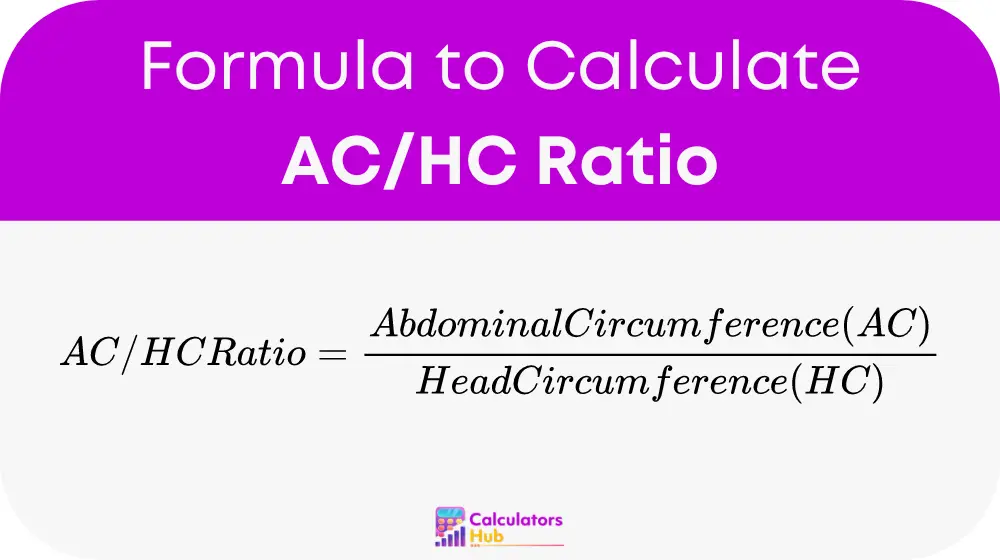The Abdominal Circumference to Head Circumference (AC/HC) Ratio Calculator is used to evaluate fetal growth by measuring the ratio between the abdominal circumference (AC) and the head circumference (HC) of the fetus. This ratio helps healthcare providers assess whether the fetus is growing normally or if there might be potential issues with its development.
Formula
The AC/HC Ratio is calculated using the following formula:

where:
- AC is the Abdominal Circumference of the fetus.
- HC is the Head Circumference of the fetus.
Steps to Calculate AC/HC Ratio
- Measure the Abdominal Circumference (AC) of the fetus.
- Measure the Head Circumference (HC) of the fetus.
- Divide the Abdominal Circumference (AC) by the Head Circumference (HC) to get the AC/HC Ratio.
Common Ratios
Here is a table with some general AC/HC ratios that can be used for reference:
| Fetal Age (weeks) | Abdominal Circumference (AC) (mm) | Head Circumference (HC) (mm) | AC/HC Ratio |
|---|---|---|---|
| 20 | 140 | 180 | 0.78 |
| 24 | 180 | 200 | 0.90 |
| 28 | 220 | 220 | 1.00 |
| 32 | 260 | 240 | 1.08 |
| 36 | 300 | 250 | 1.20 |
Example Calculation
Let’s go through an example of how to calculate the AC/HC Ratio.
- Measure the Abdominal Circumference (AC) of the fetus. Let’s say it is 250 mm.
- Measure the Head Circumference (HC) of the fetus. Let’s say it is 300 mm.
- Divide the AC by the HC:
AC/HC Ratio = 250 / 300 = 0.83
So, the AC/HC Ratio is 0.83.
Most Common FAQs
The AC/HC Ratio is important because it helps in assessing the growth pattern of the fetus. An abnormal ratio can indicate potential growth issues, prompting further investigation and possible intervention.
The AC/HC Ratio is useful throughout the pregnancy but is particularly valuable during the second and third trimesters when fetal growth patterns are more established.
An abnormal AC/HC Ratio can indicate various conditions such as intrauterine growth restriction (IUGR) or macrosomia, which may require additional monitoring and medical attention.